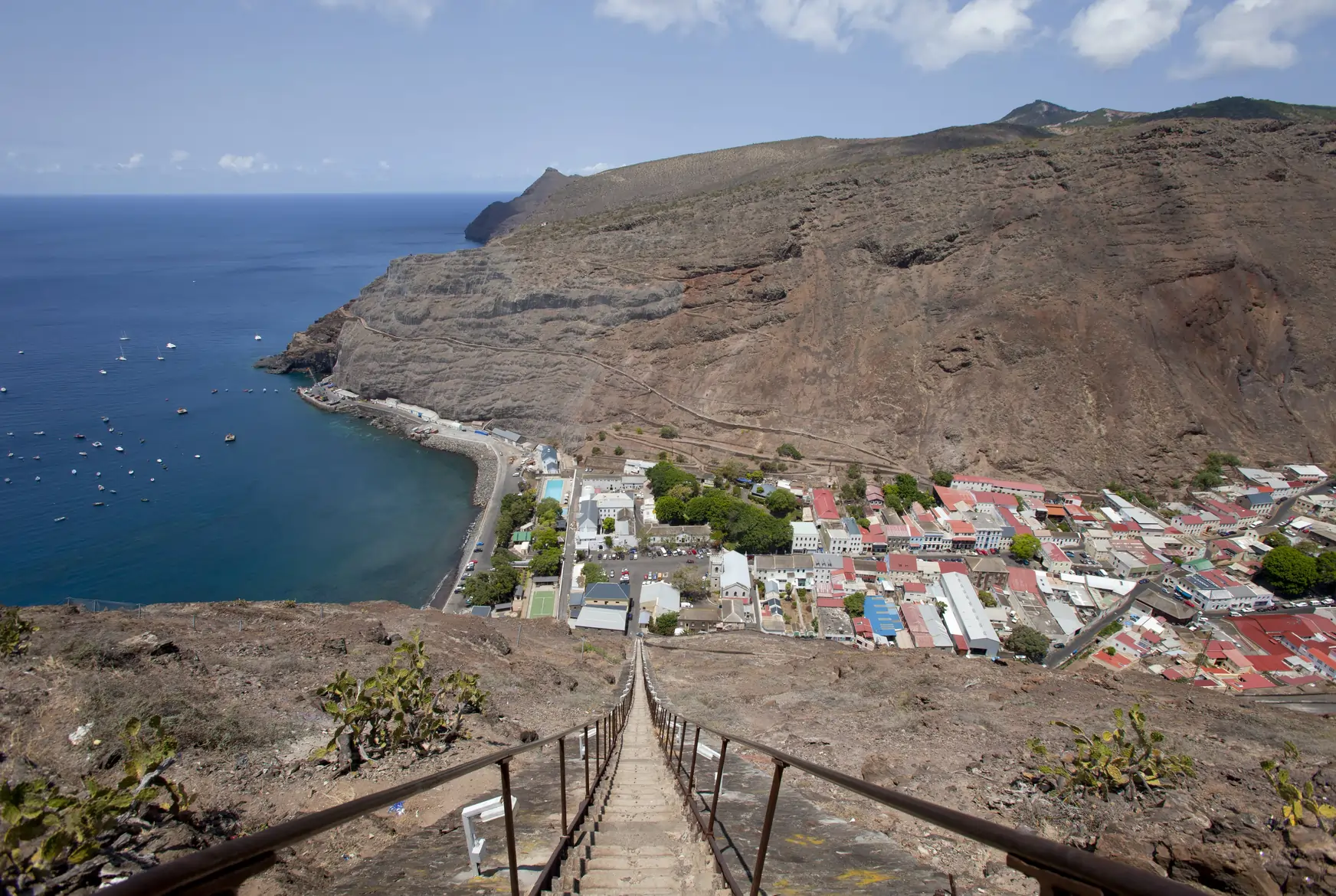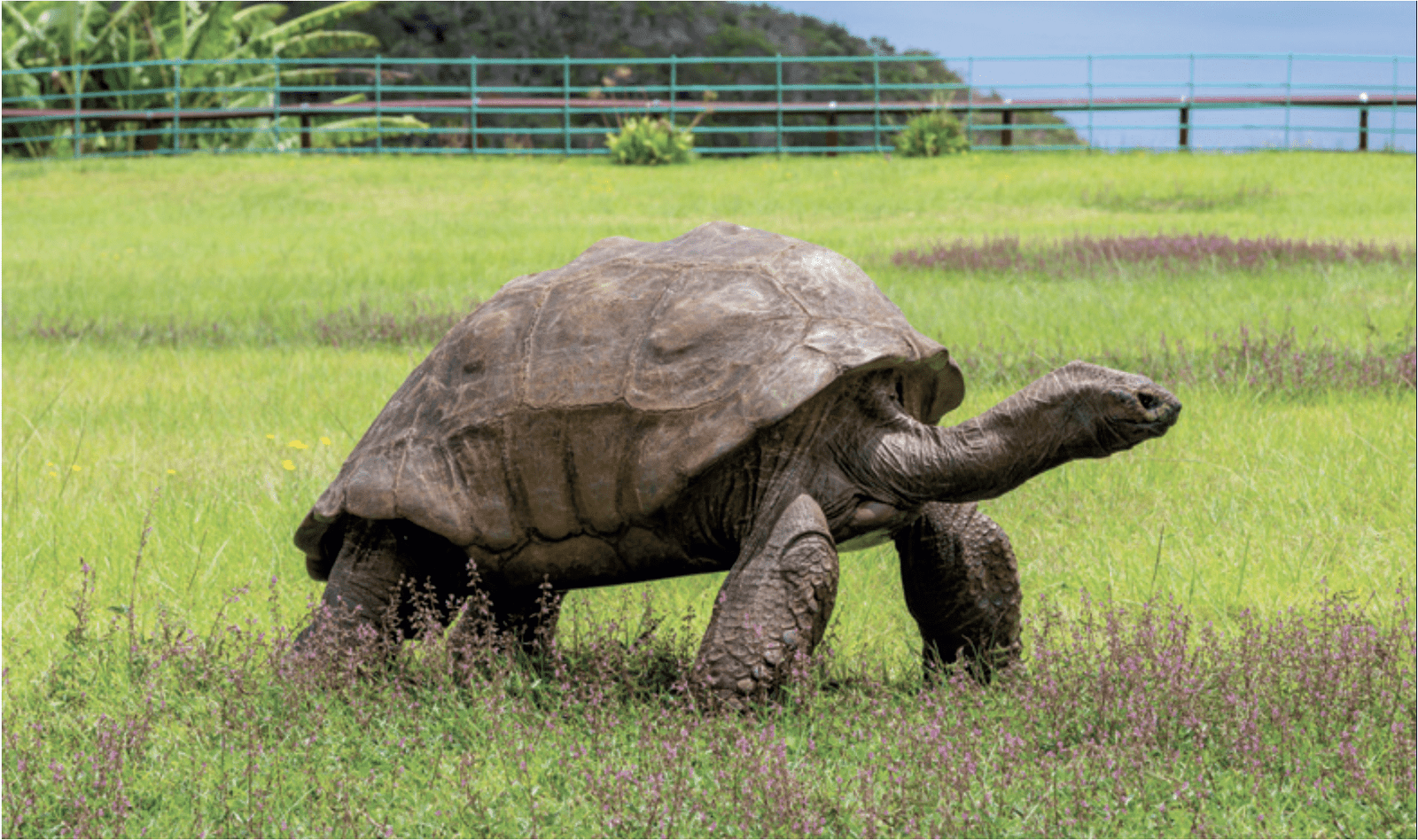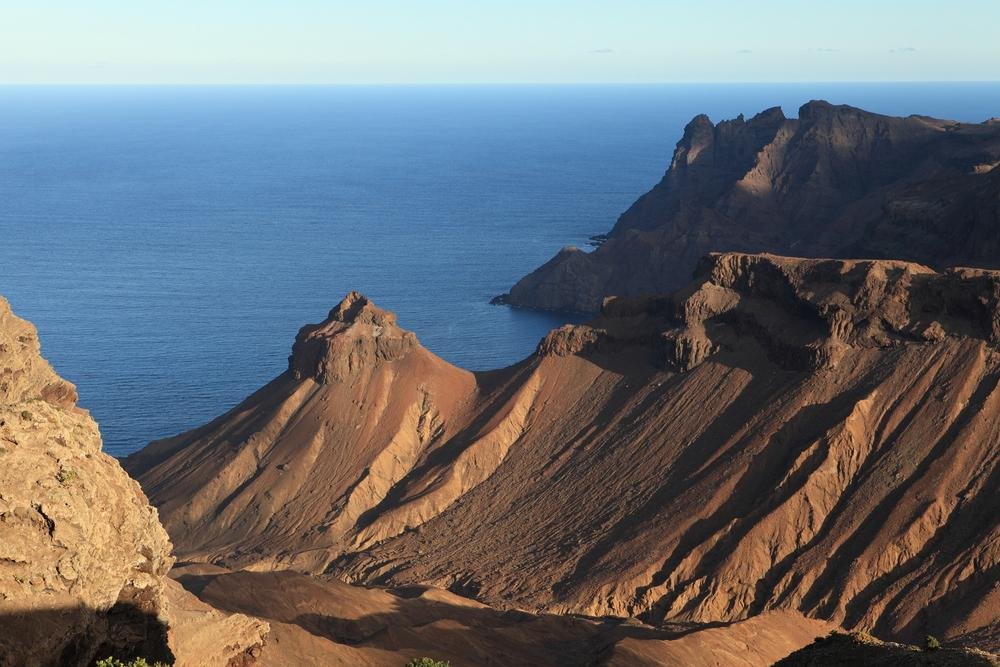A world away
An interview with Emma Weaver of the St Helena Government
St Helena Island is located in the midst of the South Atlantic Ocean. The British Overseas
Territory is the size of San Francisco – but, with fewer than 4,500 inhabitants, has just 0.5% of its population. One of the world’s most remote islands, St Helena’s natural world is globally important and is of significant scientific interest. It has a Category VI Marine Protected Area which is nearly the size of France. More than 1,900 kilometres from the nearest continent, the island is wonderfully safe and completely unique.
Climate Change Review spoke to Emma Weaver, Marketing Manager at the St Helena Government, about how this remote island is connecting to the world, embracing its natural and cultural heritage, and what makes it such a fascinating place to visit.

Climate Change Review: We understand that highspeed internet connectivity is soon coming to St Helena. Please expand on what this means to both businesses and the local community.
Emma Weaver: St Helena has always been decades behind the UK in terms of technological advancements. Electricity came into general use in the ‘80s; TV was introduced in 1995; broadband in 2007; mobile phones in 2015; and an airport in 2017 – previously the island had to be reached via a five-day voyage from South Africa. Technological developments are behind the UK’s because our isolation, limited accessibility, small population and mountainous terrain create complex development challenges. Today, the island still struggles with some of the most expensive internet on the planet, with connectivity charged per megabyte.
But in August 2021, the Equiano fibre optic internet cable was landed at St Helena and should soon bring fast and affordable internet to St Helena, for the first time. This would allow immense improvements in education, healthcare, banking, and a wealth of other sectors, to a standard typically “expected” elsewhere in the world.
For instance, more affordable connectivity could mean significant savings for businesses, reducing overall transaction costs and increasing profitability. Businesses could increase revenue streams via online marketing tactics that have previously been infeasible or impossible.
CCR: We understand that St Helena has achieved some key milestones in the past months. Please give us a little insight into what these were.
EW: In August 2022 a historic reburial occurred, finally giving our globally important transatlantic slave site some lasting physical recognition. Rupert’s Valley, an area in the north of the island, is known as the most important remaining physical trace of the transatlantic slave trade on Earth – it contains solely the remains of persons “freed” from slave ships just days or weeks out of Africa. In August, our melting-pot community showed up in full force to respectfully rebury 325 of the more-than-8,000 people buried along the hillsides.
Secondly, we are proudly home to the incredible two-time Guinness World Record holder Jonathan the Tortoise – and we have just celebrated his historic 190th birthday year. One of few surviving Seychelles Giant Tortoises, Jonathan is the world’s oldest living land animal and oldest chelonian to have ever. He arrived to St Helena in 1882 and has lived here ever since. In early December, St Helenians – who have cared for and held memories of Jonathan over multiple generations – came together for a three-day celebration of the amazing creature.

CCR: Weekly flights from South Africa have recently been reintroduced. What will this mean for tourism on the island?
EW: St Helena really only became a tourism destination in late 2017, when St Helena Airport (HLE) opened and decreased travel time to the island from a five-day ship voyage to a six-hour flight. Through to early 2020, tourism numbers increased year-on-year, showing good appetite for people wanting to visit our subtropical paradise. Unfortunately, tourism quickly went ‘on pause’ again due to the Covid-19 pandemic – our island’s entry restrictions were lifted from 8 August 2022. The fortnightly flights with Johannesburg (JNB) should now allow visitors to return, and help St Helena rebuild its fledgling tourism sector.
CCR: Please highlight some of St Helena’s main attributes as a tourist destination.
EW: St Helena is truly a breath of fresh air in today’s world – a place to disconnect from technology and reconnect with what truly matters in life: friends, family, food, culture, and nature.
Fittingly, outdoor and so$ adventure activities are what St Helena does best. Swimming with whale sharks and hiking the incredible diversity of nature trails are favourites for locals and visitors alike. The island is also famous for its unique and melting-pot cuisine – including a rice/meat dish called plo (similar to pilaf) and St Helena Coffee, one of the rarest and most prized on Earth. And the Saints – as us St Helenians are known – are a totally unique and tight-knit population renowned for being friendly and welcoming.
Our subtropical paradise is also refreshingly safe. Serious crime is a rarity. We are gratefully free from extreme weather, war, and dangerous animals. Plus, St Helena’s sparse population allows true silence and tranquillity. Whatever you choose to do here, we can make an extremely rare promise that you won’t be waiting in endless queues in order to do it!

CCR: The island is of global importance for its biodiverse habitats. Expand a little on the incredible variety of flora and fauna found on the island.
EW: St Helena is only 121.7 sq.km and yet we have more than third of all the endemic biodiversity in the whole of the UK and its territories. That’s a staggering amount of plants and animals that exist here on St Helena, that don’t exist anywhere else on Earth. Many of these species exist with the Peaks National Park – a Jurassic-like forested area in the central highlands of the island, which forms the last natural cloud forest and British territory and provides the majority of our fresh water (through mist capture and ground water recharge).
CCR: St Helena recently won an award for its ecotourism credentials. Outline what St Helena does so well to make its tourism sustainable.
EW: The island is a natural wonder, a mountainous medley of brown-orange cliffs and deeply forested highlands rising dramatically from the Atlantic, pocketed with microclimates and presenting a world’s worth of jaw-dropping landscapes all in a short drive. The strategies and objectives of both St Helena Government and St Helena Tourism focus on protecting and enhancing this environment – for instance, St Helena Tourism has taken a major role partnering with the St Helena Cloud Forest Project, ensuring that environmental protection and restoration works hand-in-hand with sustainable tourism, now and into the future.
Further information
www.sainthelena.gov.sh
ABOUT THE AUTHOR

Emma Weaver is Marketing Manager at the St Helena Government.

